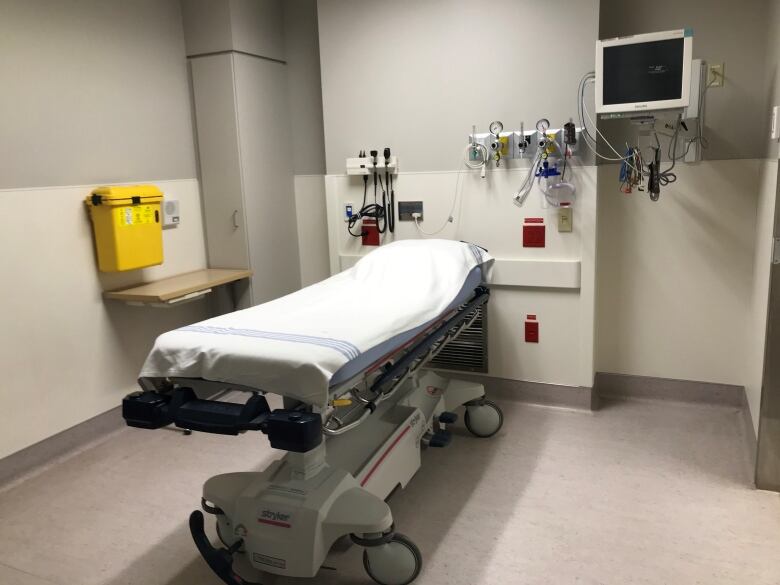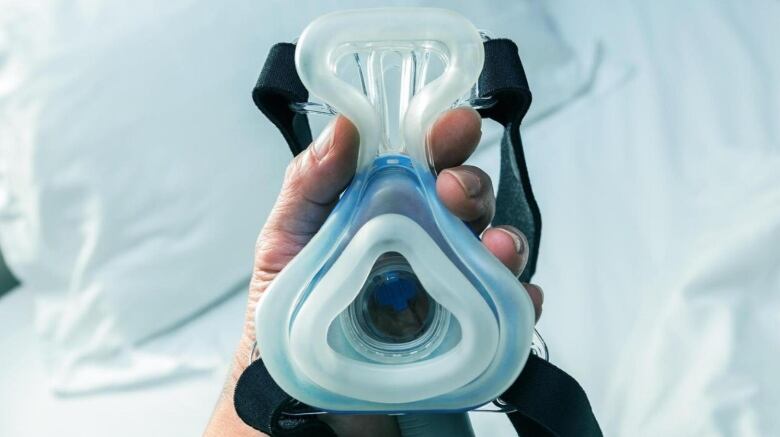Moncton respiratory therapist describes what happens when patients can't breathe
450 RTs in the province are practising how to treat patients under COVID-19 protocols

Keeping people alive on mechanical ventilators is what New Brunswick's 450 respiratory therapists are trained to do and they're doing it every day, according to Gene Breau, a veteran RT with 28 years of experience.
"We're prepared," he said.
This is the first time they've faced the notoriously infectious COVID-19 pathogen or the public anxiety about whether the health-care system can handle peak demand.
"I'm not saying that we're not worried," said Breau.
"When you're putting on the N95 mask and then you put on your goggles and your face shield, then you've got to put on your gown and your gloves, there's a whole procedural step, and you really can't mess that up," he said.
News travels in RT world
Breau said teams are constantly practising how to treat infected patients with the added protocols of donning and doffing personal protective equipment.
In addition to those simulations, Breau saidRTs across the country are talking to each other about what's coming and what's new. That includes sharing the latest information on whether COVID-19 patients respond better to treatmentif they're ventilated while lying face down.
"So a lot of us are beefing up on that now," said Breau.
According to the World Health Organization, collected data to date suggeststhat 80 per cent of COVID-19 infections are mild or asymptomatic, 15 per cent are severe infections, requiring oxygen, and five per cent are critical infections, requiring ventilation.
"One of the components of COVID-19 is that it causes pneumonia and that can lead to respiratory failure, which means the lungs are damaged to the point that they need life support," said Breau.
How lungs work
Breau saidnormal, healthy lungs have a self-cleaning system called the mucociliary escalator.
Some compare it to shag carpet, with countless hair-like cells that beat 1,500 times a minute, sweeping phlegm and dirt up and out of the lungs.
When the virus damages that system and the lungs can't clear themselves, moisture and secretions build up inside, making the airway prone to bacterial infections.
The virus also injures the air sacs where oxygen is absorbed into the bloodstream.
It can trigger an inflammatory response inside the lungs, which leads to fluid build-up and more complications.
In some of the worst cases, patients develop acute respiratory distress syndrome, or ARDS.
These patients must be ventilated by a machine that keeps their lungs open and the air flowing into them.
It begins with intubation when a tube is inserted into the sedated patient's mouth and pushed down the throat into the upper trachea, just before it branches into each lung.
Through that tube, oxygenated air is delivered into the lungs and carbon dioxide is released.
It's an intense moment for everyone attending the patient.
"You have to decide who is going to intubate, who is going to be the team leader, and who is going to manage the drugs," said Breau.
"If you're intubating, you have to be focused on that and nothing else."
WATCH: Moncton respiratory therapist describes why some COVID-19 patients end up needing life support.
Doing drills
Now try doing that, with the added complications of COVID-19, a virus easily spread in respiratory droplets moving through the air.
Breau said that was the focus of a drill last week inside a negative pressure room at the Moncton Hospital.
A negative pressure room, sometimes called an isolation room, has a ventilation system that generates lower air pressure inside the room where the patient is being treated.

Air tends to be drawn into that room, instead of flowing into the hospital corridor through any gaps. The air inside the room is then filtered and exhausted outside the building. It is typically vented out through the roof.
"Generally, within that room, there's only going to be three people the RT, an RN and one doctor," said Breau.
"Outside that room, in the anteroom, there's another doctor, ready to go with another nurse.
"Then outside that room, there are people who are ready to run and assist us in any way possible. We have walkie-talkies so we can communicate with each other."
RTs tested in normal times too
Breau said working with a COVID-19 patient will be intense.
ButRTs are conditioned to working in the most difficult situations even in so-called normal times, he said.
They're constantly responding to critical patients all over the hospital, including operating rooms, trauma units and the neonatal ward, where they sometimes have to ventilate the tiniest premature babies.
The protection of all those other patients is top of mind, as teams practise putting on all the equipment designed to protect them from the virus and to stop the virus from spreading.
"We have an observer, someone who is watching you to make sure you do everything right," said Breau.
Ventilators by the numbers
New Brunswick's executive council office recently provided revised inventory numbers to the CBC.
The office says that the provincehas a total of 225 ventilators across all of its hospitals and that an unspecified number are on order.
According to an emailed statement, the equipment is coming from suppliers in France, Germany, Malaysia, Singapore and the United States and may start arriving this week.
It's not clear how the province is procuring them, or competing with global demand.

For example, Ontariohas ordered 300 ventilators.
British Columbia ordered 120 ventilators about three weeks ago and as of last Tuesday, only 24 had arrived, according to a technical briefing Friday.
B.C. is expecting another 29 this week.
Splitting ventilators a 'last ditch effort'
Breauhas experimented with splitting one ventilator to use on more than one patient but it's complicated.
"It's possible," he said. "I've actually tried it on test models and it does work but that would be a last-ditch effort."
Breau said each patient is unique in terms of how much air their lungs can accept and at what speed.
A small child, for example, would have smaller lungs than a 200-pound adult.
The severity of illness also impacts how much airflow a patient can take.
In normal operations, each machine is calibrated to a specific patient.
Staff, as well as machines, needed
The RT then has to monitor that patient's oxygen and carbon dioxide levels, heart rate, blood pressure, and other signs from organs such as the kidney.
And when it comes to managing a pandemic, it's not just a question of how many machines are available but also how many health-care workers are needed to operate them.
Breau saidsome studies suggest that one RT could monitor as many as five patients.
However, in cases of acute respiratory distress syndrome, the most likely RT-patient ratio would be one to one.













_(720p).jpg)


 OFFICIAL HD MUSIC VIDEO.jpg)
.jpg)



























































































